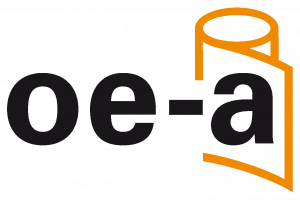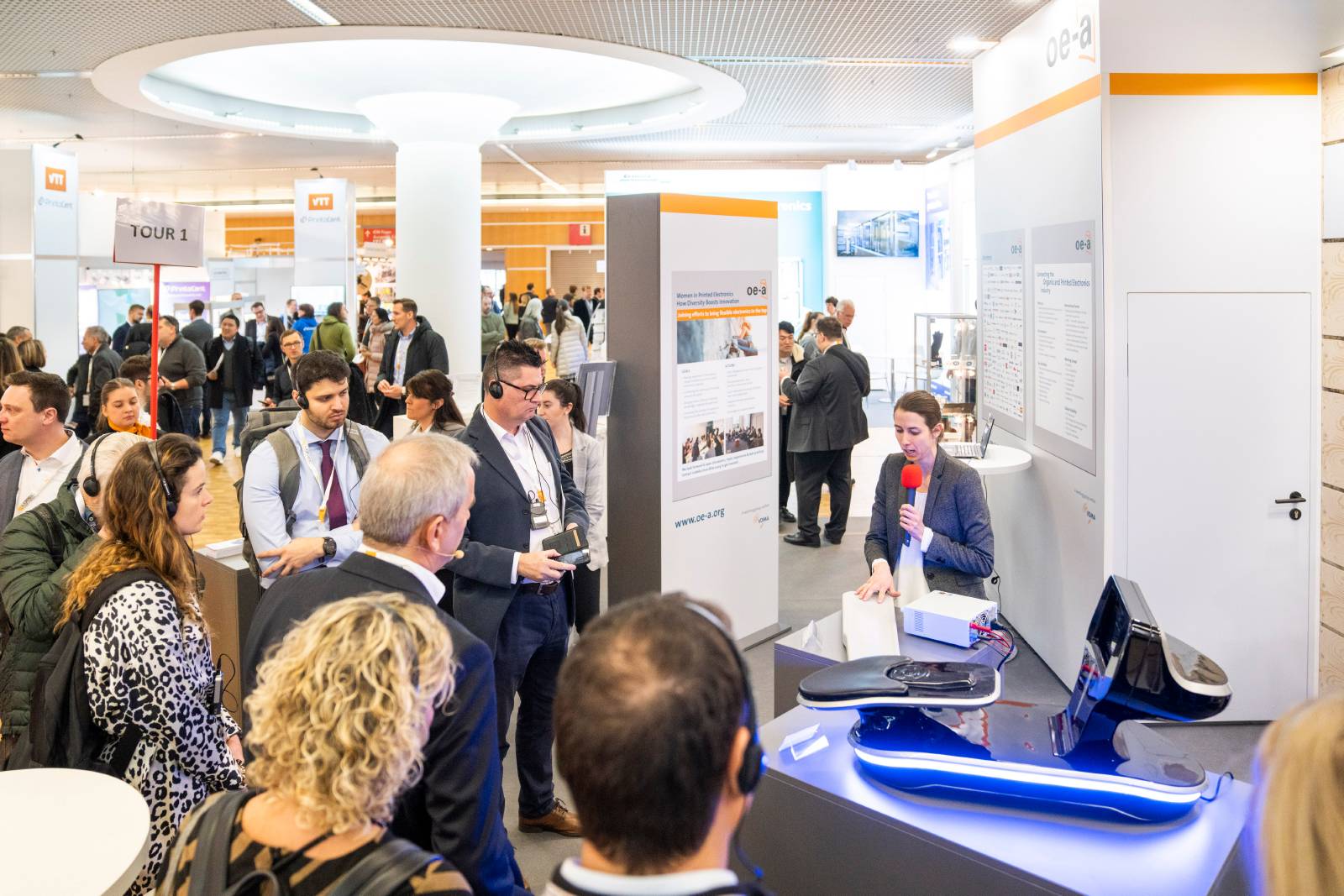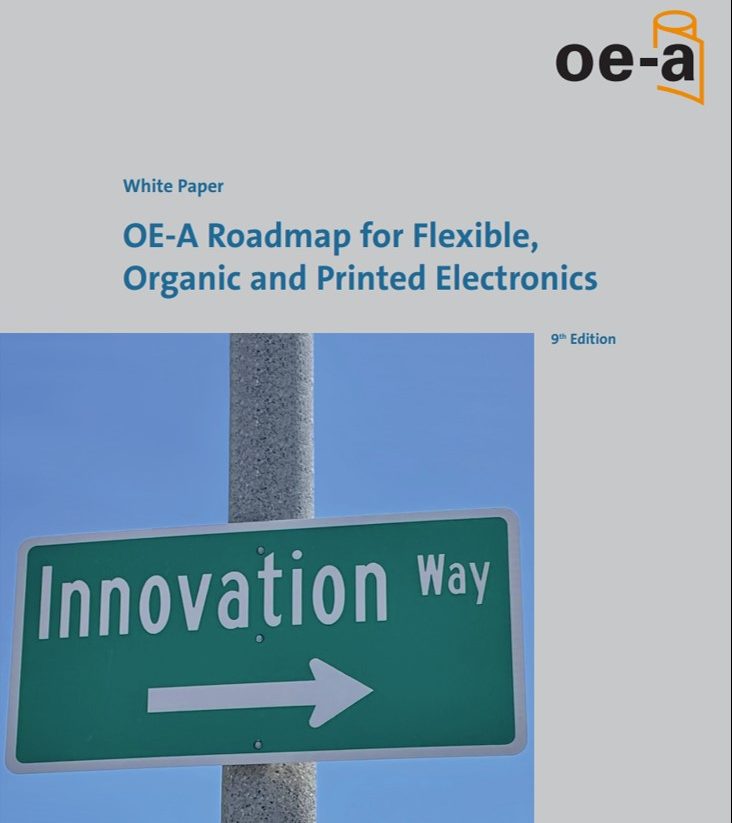- Smart solutions from industry and academia for tackling the pandemic – in a digital format
- Smart patches for the monitoring of Covid-19 patients
- Printed sensors for protective masks and distance control
More than a year after the onset of the Corona pandemic, the world is still in a state of emergency. Printed electronics offers solutions to release pressure from the healthcare system and increase the effectiveness of protective measures. “Printed electronics manufacturers responded extremely fast to the pandemic and have adapted their products to meet the particular challenges,” explained Dr. Klaus Hecker, Managing Director of the OE-A. However, the technology’s potential is still far from being exploited. With its proven combination of international exhibition and Conference, LOPEC consequently targets all players along the entire value chain of printed electronics. “We want to inspire innovative solutions and encourage collaboration, because in times of the pandemic, cross-industry cooperation is more important than ever,” emphasized Lena Haushofer, LOPEC Exhibition Director at Messe München.
Health patch for Covid-19 patients
One example of successful cooperation is the Covid-19 health patch which was jointly developed by seven companies, led by LOPEC exhibitors Henkel and Quad Industries. In their plenary lecture at the LOPEC Conference on March 24, Dr. Stijn Gillissen, Global Head Printed Electronics at the Duesseldorf-based consumer goods manufacturer Henkel, and Dr. Wim Christiaens, R&D Director at the Belgian technology provider Quad Industries, are going to present their concept. The patch is based on integrated printed sensors to capture respiration, heart rate and body temperature of Covid-19 patients. The data are transmitted wirelessly to the cloud and can be accessed through a user-friendly platform. Consequently, medical staff cannot only save time but also avoid direct contact with infected persons, thus reducing the risk of infection. Following successful tests last spring, the Covid-19 health patches are meanwhile being used by around 20 clinics in Belgium.
Printed electronics is thin, flexible and lightweight. These properties make them compatible with the soft, curved and dynamic surfaces of the human body, pointed out Professor John Rogers of Northwestern University in Illinois, USA. In his LOPEC plenary lecture on March 25, he will speak about the topic of health monitoring in more detail. In addition to Covid-19 projects, Rogers will focus on the patches his group developed for the monitoring of premature and newborn infants.
Printed sensors in face masks and floor mats
Today, printed electronics is able to add smart additional functionalities to almost any product. Researchers at the Dutch Holst Centre in Eindhoven, for example, have integrated a printed moisture sensor into a commercially available mouth and nose protection mask. It indicates when the mask becomes too wet and no longer provides sufficient protection. A circuit printed with stretchable inks and integrated into the mask informs the wearer whether the face mask is fitting tight enough. And why not incorporate an ultra-thin microphone into the mask to eliminate communication problems? This is another topic addressed by the Dutch researchers who will be presenting their innovations at the online exhibition and in several Conference presentations.
In addition to moisture indicators for masks, LOPEC exhibitor InnovationLab from Heidelberg has developed another helpful tool for pandemic management: smart floor mats with integrated pressure sensors that help retailers manage distancing. Placed at store entrances and exits, they register customers and indicate through a traffic light or display panel whether the number of people in the store meets the requirements. The sensor mats are equally effective for the checkout area of supermarkets, where they can monitor distances in the waiting line.
High-volume printing on film: Between 10,000 and one million sensors per minute
Global pandemic control requires cost-effective products in large quantities. It is therefore of particular advantage that the sensors and other electronic components are manufactured by printing processes suitable for large-scale production, as Dr. Florian Ullrich of InnovationLab will explain at the Business Conference of the LOPEC Conference on March 23. InnovationLab prints between 10,000 and one million sensors on film per minute. The company also provided information about the smart mats in a LOPEC Web Seminar that was recorded last year and is available on the website.
Printed electronics is an innovation driver that is making an impact far beyond the pandemic. All those, for example, who are wearing protective masks in their daily work—whether in the operating room or when handling toxic substances—will benefit from the additional smart functionalities. The smart patches, in turn, can not only monitor Covid-19 patients, but, above all, simplify the care for chronically ill patients in the home environment as doctors can continuously keep an eye on their vital parameters from a distance.
The pandemic has accelerated digitization in many industry sectors. It is not only in medicine that the demand for printed sensors and other lightweight, flexible electronic components will continue to grow. “Over the past decade, printed electronics has evolved from a niche application to a cross-industry and key technology,” emphasized Hecker. LOPEC has accompanied the development from the very beginning. Also in its online format, LOPEC is the ideal platform for all those who want to prepare themselves today for the markets of tomorrow.





